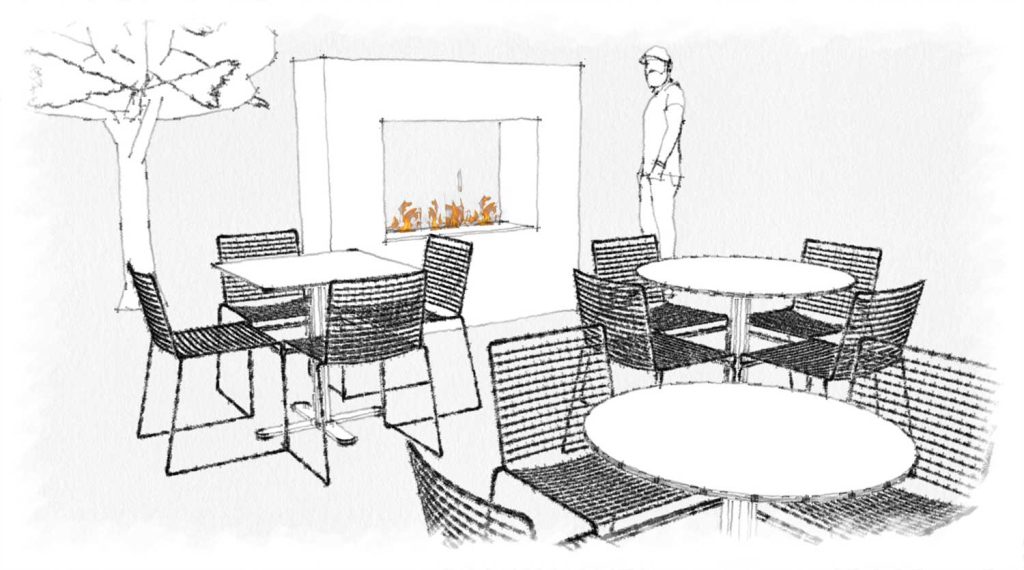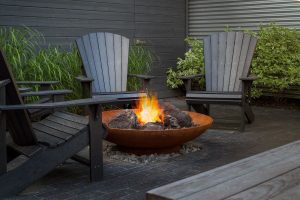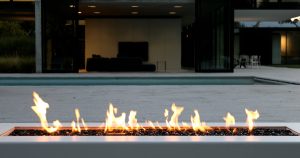Spring is officially in the air! Once again, the promise of warmth entices us outside to feel fresh air on our skin and share time with friends and family. In honour of the season of growth and possibility, we offer some practical and design considerations for incorporating fire pits and free-standing fireplaces into outdoor areas. Whether seaside, in a country garden or on a rooftop terrace there is no better way to add warmth, cosiness and a natural gathering spot than with a fire pit or fireplace.
Incorporating a fire feature into an outdoor space is relatively easy but it is important to plan for it as early as possible in the process so that it meets the needs of the end-user and the installation is as simple as possible.
FIRE PITS VS. FIREPLACES
Outdoor gas fire pits have evolved from campfires. They offer a safer, tidy alternative to wood-burning which is often too hot, messy and unpredictable, not to mention illegal in many locations.
Fire pits create spatial hubs, with furnishings radiating out from the central fire. Like campfires, they encourage gathering and establishing the centre of a space. Fire pit conversations happen across the fire and this allows for total aesthetic immersion in the mesmerizing flames.
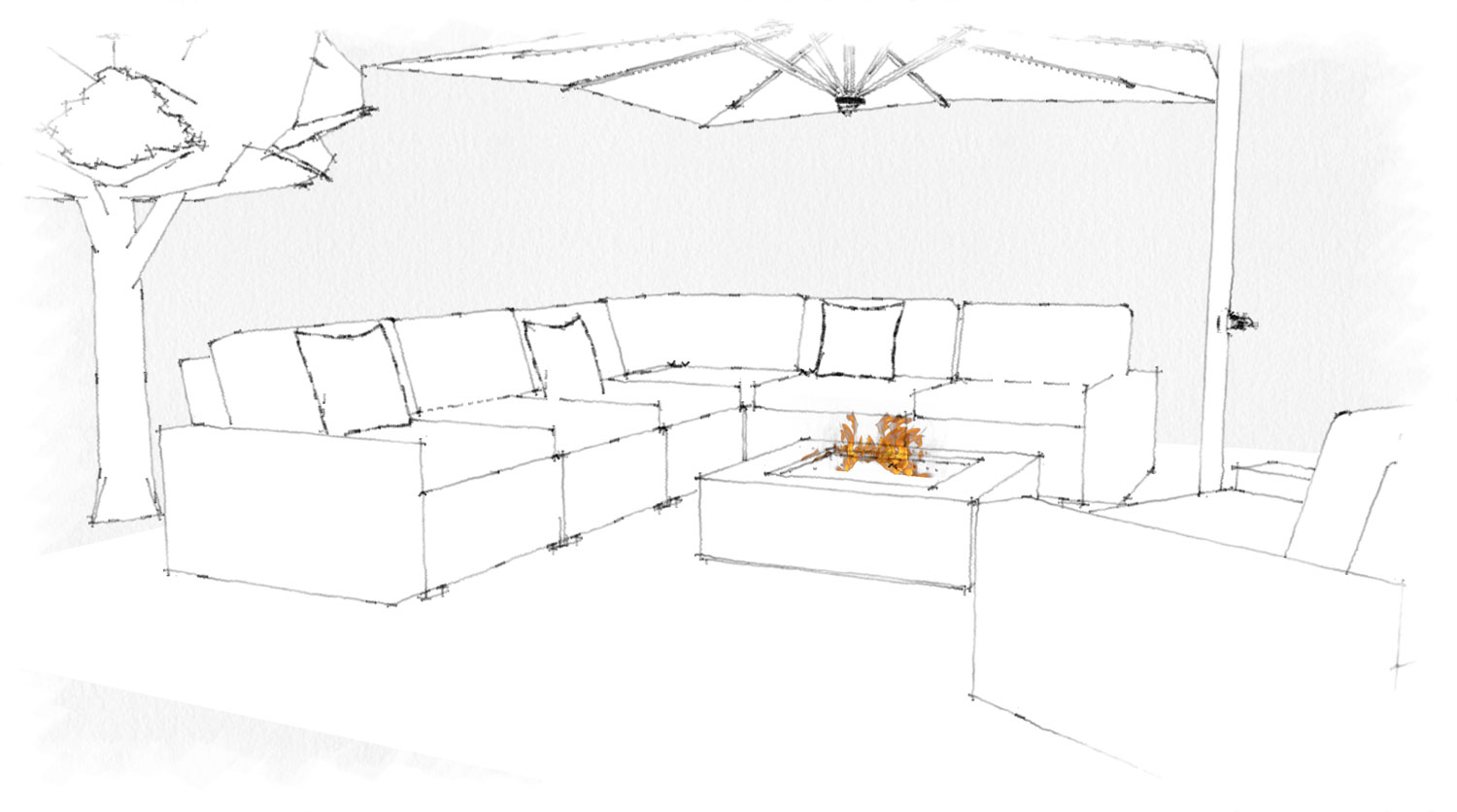
In concept, fire pits are quite simple: a container and a burner. The container is usually a vessel or table, of metal or concrete, that holds a stainless steel burner – the goal being to safely contain a fire in a weather-resistant enclosure. Outdoor fire pit burners are designed to create an aesthetically pleasing flame that produces a specified amount of heat (BTUs or kW/hour) and will not be blown out by wind.
TECHNICAL REQUIREMENTS FOR A FIRE PIT:
- A stable level location that allows air to flow in through the base and water to flow out.
- A fuel source: natural gas, liquid propane or ethanol. Consider where the gas line can be run, if using gas bottles where they will be stored etc.
- A way of turning the fire on and off. This can either be a manual ignition which does not require an electrical connection or an electronic ignition which requires an electrical connection to the burner as well as a control method such as a wall switch, timer, remote-controlled socket or smart home system. See our article on ignition systems here.
- Appropriate clearances to combustibles.
Look for fire pits certified to meet your local safety requirements that include features such as:
- Measurable and consistent heat output.
- A stable vessel that will not tip.
- Flame sensor gas shut-off that prevents the hazard of unburnt gas being released into the air.
- Options for glass shield or metal screen options for highly windy situations or where safety requires them.
Freestanding outdoor fireplaces are modelled after their indoor counterparts but are made of materials and parts that are suited to be exposed to the elements. They can either be purchased as turn-key objects that include the housing and the burner, such as our Kodo, or they can be bespoke designs that are built on-site. From a functional perspective, free-standing fireplaces operate the same way as fire pits and have the same safety features.
Unlike fire pits, outdoor fireplaces are designed to define spaces by acting more as walls, and they can be used either on the perimeter of a space or as dividers. Their warmth and ambience are projected outwards in a planar fashion, one hundred and eighty degrees from their faces. As such, furniture is positioned much like it would be in a living room, either with the fireplace defining the central axis of the space or in a semi-circular fashion, with the fireplace at the centre. In either configuration, an outdoor fireplace provides a vertical structure that creates a sense of enclosure and cosiness.
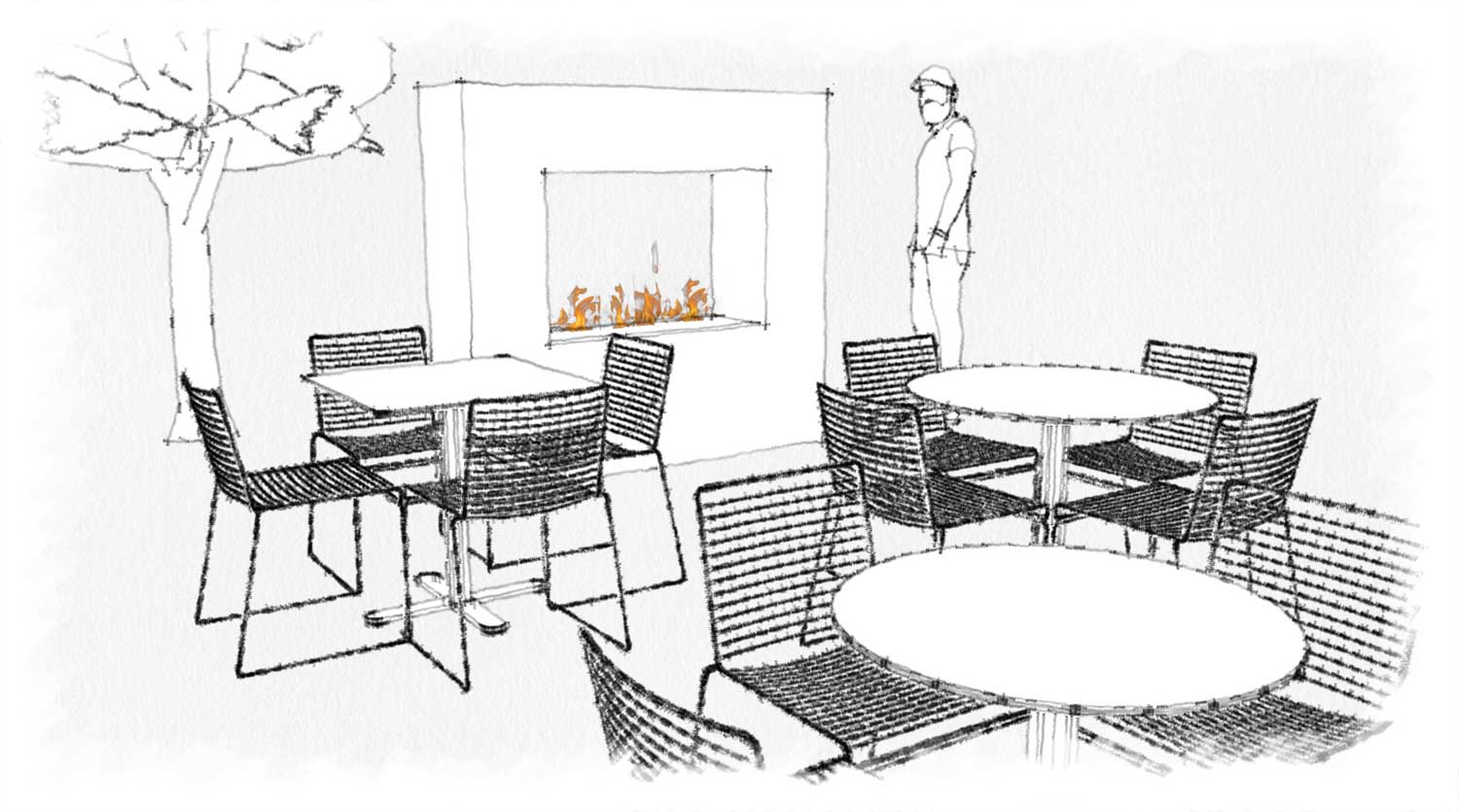
Considerations when planning for an outdoor fireplace can be a bit more involved than with a fire pit: The verticality of the structure requires stabilising through bolting to a concrete pad or footings or affixing to an adjacent structure that is suitably sturdy. Technical requirements for outdoor fireplaces are much the same as for fire pits:
- A stable level location that allows air to flow in through the base and water to flow out.
- A fuel source: natural gas, liquid propane or ethanol. Consider where the gas line can be run, if using gas bottles where they will be stored etc.
- A way of turning the fire on and off. This can either be a manual ignition which does not require an electrical connection or an electronic ignition which requires an electrical connection to the burner as well as a control method such as a wall switch, timer, remote-controlled socket or smart home system. See our article on ignition systems here.
- Appropriate clearances to combustibles.
As with fire pits, look for free-standing fireplaces or burners that are certified to meet your local safety requirements.
However you choose to incorporate fire into outdoor areas, remember that fire itself is a design element. Plan not just for how the fire pit or fireplace will look but for the functional and aesthetic impact that the flames will have on the space.
We love fire and believe that the simple presence of flickering flame enhances our experience of the outdoors. Flame on!
